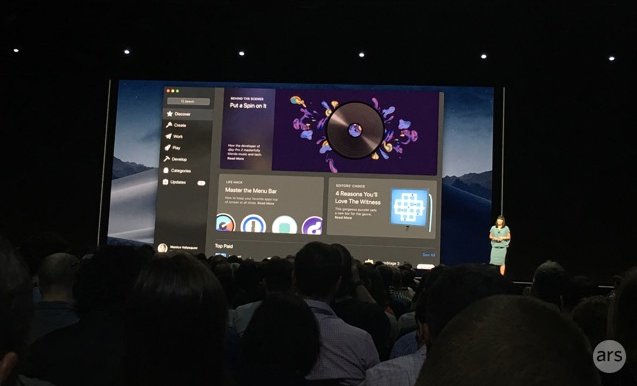
For a while now, Apple has been encouraging app developers to consider subscriptions as a key revenue source, and the company is introducing some new options for developers that it hopes will make the option more attractive. In the past few days, Apple has informed developers that they will now be able to target current and recent subscribers with promotional rates on subscriptions. That means developers will be able to offer discounts to try to get you back if you lapse, or they might try to entice you to stay if you're considering leaving.
Developers could previously offer limited-time subscription discounts but only to new users. The new model is available in recent beta releases of iOS 12.2, macOS Mojave 10.14.4, and tvOS 12.2, and it is likely to be included in the final public release for each. Apple will facilitate three different types of offer for developers who want to retain or regain subscribers.
Here's how they're described in Apple's App Store Connect post on the subject:
Free
Customers access your subscription for free for a specific duration—for example, a 30-day trial for a subscription with a standard renewal price of $4.99 per month.Pay As You Go
Customers pay a promotional price for each billing period for a selected duration—for example, $1.99 per month for three months for a subscription with a standard renewal price of $9.99 per month.Pay Up Front
Customers pay a one-time promotional price for a specific duration—for example, $9.99 for the first six months of a subscription with a standard renewal price of $39.99 per year.
To deploy these offers, developers will need to implement new StoreKit APIs using the latest beta version of Xcode. They can test using the aforementioned iOS, macOS, and tvOS betas, but the offers will not become available to users until the "the feature is publicly available."
Apple has actually already made similar offers to iPhone users for Apple Music, but this is the first time other developers on Apple's platform can reach lapsed subscribers this way.Apple specifically positions the feature as one for resubbing lapsed users. The company writes, "You can use subscription offers to help win back subscribers who have canceled their subscriptions or promote an upgrade to another subscription at a special price." Apple also clarifies that users will be able to take advantage of the offers even if they already participated in a similar initial sign-up offer when they first subscribed. Further, developers will be able to target users who have set subscriptions to end at the next pay date to use these offers to convince them to stay.
Apple reportedly gathered developers of all types—makers of games, productivity apps, photography apps, and so on—in New York in 2017 to make the case for subscriptions as a viable model, even on mobile.
-
Many apps are now using subscriptions. Some examples of how they're using them: Meditation and mindfulness app 10% Happier immediately prompts users to sign up for a trial to its subscription-based services.Samuel Axon
-
Popular Ubisoft mobile game Assassin's Creed: Rebellion offers a premium membership with significant perks.Samuel Axon
-
Photo animation app Cinemagraph offers some free options, but it encourages users to look into an upgraded, subscription-based membership at the top of the app for many more features.Samuel Axon
-
Another game, idle mobile casual title Furistas: Cat Cafe, offers more resources and a free cat, among other things, for subscriptions.Samuel Axon
-
MyFitnessPal, one of the most popular weight-loss apps, offers users more control over their diet and exercise tracking for an annual subscription fee.Samuel Axon
Games and high-end productivity and creative work suites have long used the model on PCs, but it was previously somewhat rare on mobile. Anyone using new iOS apps regularly has probably seen that change. Games that rely on IAP now frequently offer optional subscriptions that allow players to progress faster or get discounts on other purchases. Photography apps charge a couple of dollars per month for access to powerful, AI-driven filters. And powerful productivity apps offer subscriptions not dissimilar to—though usually cheaper than—Adobe Creative Cloud and the like. In most cases, developers have chosen to make the subscriptions value-added rather than essential for basic function. But not always.
Apple takes a 30-percent cut of subscription revenues from apps in the App Store for the first year a subscriber is paying, but it drops the cut to 15 percent after the subscriber has passed the one-year mark. This drop is partly an effort to reward developers who produce apps of sufficient quality to entice subscribers to stay that long, but it's also a response to initial complaints that the terms were burdensome.The subscriptions model is part of a larger strategic push at Apple to pivot to monetizing content, services, and experiences on its platforms in addition to revenue from hardware sales. This push is itself partly in response to and in anticipation of iPhone sales lulling slightly internationally and partly in response to the success that was the 2015 launch of Apple Music.
Listing image by Valentina Palladino
reader comments
188